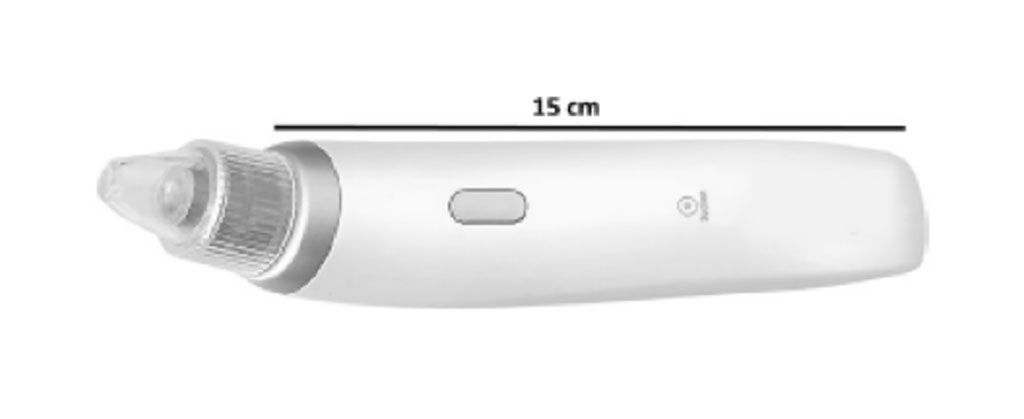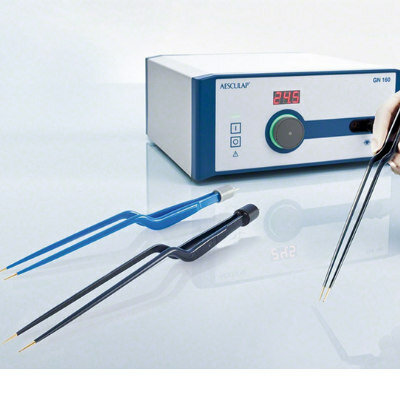Delivering COVID-19 Vaccines via Suctioning Technique May Help Generate Higher Antibody Levels
|
By HospiMedica International staff writers Posted on 08 Nov 2021 |

Researchers studying COVID-19 have created a new way to deliver DNA molecules into skin cells, using a suction technique similar to the ancient healing practice of cupping.
In laboratory tests with rodents, the team of researchers at Rutgers University (New Brunswick, NJ, USA) used the suction method to deliver a SARS-CoV-2 DNA vaccine, which generated a strong immune response – about 100 times stronger than an injected vaccine alone. Cupping is a traditional practice in which heated cups are placed on the skin to create negative pressure, increasing blood circulation to the area in an effort to promote healing. Nucleic-acid medicine is a next-generation technology using DNA, RNA and other biomolecules that control genetic information. It has grown extensively over the past two decades due to its promise in treatments and vaccines for various diseases. Most recently, several nucleic-acid-based vaccines have been rapidly designed, manufactured and mass-distributed to fight the COVID pandemic.
Nucleic-acid medicine works when synthetic or engineered nucleic acids enter host cells and, using the cellular machinery, direct the production of encoded proteins to prompt an immune response in case of a vaccine. A key step in this process is transfection, or the delivery of purified nucleic acids across the cell-membrane barriers into the cytoplasm (RNA) and nucleus (DNA) of host cells. If DNA and RNA molecules are injected into tissue, they do not automatically enter the host cells and most will rapidly degrade unless they are protected.
For example, in mRNA-based COVID vaccines, lipid nanoparticles are used to enclose the mRNAs to protect and help deliver them across the host cell membrane, so that the coded protein is produced and an immune response provoked. Alternately, an electrical field is often used to deliver DNA to cells, but this method commonly causes adverse effects, including inflammation, pain and tissue damage. However, in the new study, after the injection of pure DNA, the researchers applied suction directly to the site to create negative pressure atop the skin. The suction produced strain and relaxation in the layers of skin, triggering uptake of the DNA molecules by skin cells. The new method is simple, painless and has no known side effects, according to the researchers.
“This suction-based technique is implemented by applying a moderate negative pressure to the skin after nucleic acid injection in a totally non-invasive manner,” said the study’s senior author Hao Lin, a professor in the Department of Mechanical and Aerospace Engineering at Rutgers-New Brunswick. “This method enables an easy-to-use, cost-effective and highly-scalable platform for both laboratory and clinical applications for nucleic-acid-based therapeutics and vaccines.”
“Development of enhanced delivery technologies plays an instrumental role in bringing nucleic-acid based biologics to broad use and clinical relevance, and world-wide vaccine distribution is just one example,” he said. “We have demonstrated an alternative, safe and effective transfection platform that yields high levels of transgene expression. The advantages also include device cost-effectiveness and manufacturing scalability and minimal requirements for user training. Because of the inherent advantages of DNA, not least of which is avoiding cold-chain requirements of other vaccines, this technology facilitates vaccination programs into remote regions of the world where resources are limited.”
Related Links:
Rutgers University
Latest COVID-19 News
- Low-Cost System Detects SARS-CoV-2 Virus in Hospital Air Using High-Tech Bubbles
- World's First Inhalable COVID-19 Vaccine Approved in China
- COVID-19 Vaccine Patch Fights SARS-CoV-2 Variants Better than Needles
- Blood Viscosity Testing Can Predict Risk of Death in Hospitalized COVID-19 Patients
- ‘Covid Computer’ Uses AI to Detect COVID-19 from Chest CT Scans
- MRI Lung-Imaging Technique Shows Cause of Long-COVID Symptoms
- Chest CT Scans of COVID-19 Patients Could Help Distinguish Between SARS-CoV-2 Variants
- Specialized MRI Detects Lung Abnormalities in Non-Hospitalized Long COVID Patients
- AI Algorithm Identifies Hospitalized Patients at Highest Risk of Dying From COVID-19
- Sweat Sensor Detects Key Biomarkers That Provide Early Warning of COVID-19 and Flu
- Study Assesses Impact of COVID-19 on Ventilation/Perfusion Scintigraphy
- CT Imaging Study Finds Vaccination Reduces Risk of COVID-19 Associated Pulmonary Embolism
- Third Day in Hospital a ‘Tipping Point’ in Severity of COVID-19 Pneumonia
- Longer Interval Between COVID-19 Vaccines Generates Up to Nine Times as Many Antibodies
- AI Model for Monitoring COVID-19 Predicts Mortality Within First 30 Days of Admission
- AI Predicts COVID Prognosis at Near-Expert Level Based Off CT Scans
Channels
Critical Care
view channel
Ingestible Capsule Monitors Intestinal Inflammation
Acute mesenteric ischemia—a life-threatening condition caused by blocked blood flow to the intestines—remains difficult to diagnose early because its symptoms often mimic common digestive problems.... Read more
Wireless Implantable Sensor Enables Continuous Endoleak Monitoring
Endovascular aneurysm repair (EVAR) is a life-saving, minimally invasive treatment for abdominal aortic aneurysms—balloon-like bulges in the aorta that can rupture with fatal consequences.... Read more
Wearable Patch for Early Skin Cancer Detection to Reduce Unnecessary Biopsies
Skin cancer remains one of the most dangerous and common cancers worldwide, with early detection crucial for improving survival rates. Traditional diagnostic methods—visual inspections, imaging, and biopsies—can... Read moreSurgical Techniques
view channel
Robotic Assistant Delivers Ultra-Precision Injections with Rapid Setup Times
Age-related macular degeneration (AMD) is a leading cause of blindness worldwide, affecting nearly 200 million people, a figure expected to rise to 280 million by 2040. Current treatment involves doctors... Read more
Minimally Invasive Endoscopic Surgery Improves Severe Stroke Outcomes
Intracerebral hemorrhage, a type of stroke caused by bleeding deep within the brain, remains one of the most challenging neurological emergencies to treat. Accounting for about 15% of all strokes, it carries... Read morePatient Care
view channel
Revolutionary Automatic IV-Line Flushing Device to Enhance Infusion Care
More than 80% of in-hospital patients receive intravenous (IV) therapy. Every dose of IV medicine delivered in a small volume (<250 mL) infusion bag should be followed by subsequent flushing to ensure... Read more
VR Training Tool Combats Contamination of Portable Medical Equipment
Healthcare-associated infections (HAIs) impact one in every 31 patients, cause nearly 100,000 deaths each year, and cost USD 28.4 billion in direct medical expenses. Notably, up to 75% of these infections... Read more
Portable Biosensor Platform to Reduce Hospital-Acquired Infections
Approximately 4 million patients in the European Union acquire healthcare-associated infections (HAIs) or nosocomial infections each year, with around 37,000 deaths directly resulting from these infections,... Read moreFirst-Of-Its-Kind Portable Germicidal Light Technology Disinfects High-Touch Clinical Surfaces in Seconds
Reducing healthcare-acquired infections (HAIs) remains a pressing issue within global healthcare systems. In the United States alone, 1.7 million patients contract HAIs annually, leading to approximately... Read moreHealth IT
view channel
Printable Molecule-Selective Nanoparticles Enable Mass Production of Wearable Biosensors
The future of medicine is likely to focus on the personalization of healthcare—understanding exactly what an individual requires and delivering the appropriate combination of nutrients, metabolites, and... Read moreBusiness
view channel
Philips and Masimo Partner to Advance Patient Monitoring Measurement Technologies
Royal Philips (Amsterdam, Netherlands) and Masimo (Irvine, California, USA) have renewed their multi-year strategic collaboration, combining Philips’ expertise in patient monitoring with Masimo’s noninvasive... Read more
B. Braun Acquires Digital Microsurgery Company True Digital Surgery
The high-end microsurgery market in neurosurgery, spine, and ENT is undergoing a significant transformation. Traditional analog microscopes are giving way to digital exoscopes, which provide improved visualization,... Read more
CMEF 2025 to Promote Holistic and High-Quality Development of Medical and Health Industry
The 92nd China International Medical Equipment Fair (CMEF 2025) Autumn Exhibition is scheduled to be held from September 26 to 29 at the China Import and Export Fair Complex (Canton Fair Complex) in Guangzhou.... Read more
















